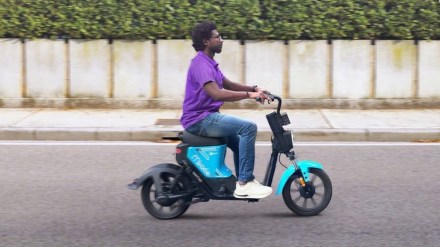By Amit Gupta
The world’s fastest-growing economy is clearly in a hurry. The convergence of demand and digital infrastructure has come at the right time, satiating the appetites of millions and driving consumption to unprecedented levels. One unmissable sign of this trend is the rise of quick or ‘instant’ commerce.
India’s tryst with quick commerce (q-com) is different from the global scenario, where it’s been largely a mixed bag. Thanks to our high urban demand density, the success of the dark store (micro-warehouse) model and an enormous pool of gig workers, q-com in India has seamlessly fit into the lifestyles of buyers who are already pivoting to the life-changing convenience of on-demand entertainment, education, logistics and finance. With reports indicating 10X market growth for q-com by 2030, the segment is here to stay.
But even as q-com matures, players must also prepare for the opportunities and challenges that lie ahead. As a mobility partner to the country’s top q-com brands, I’d like to share 5 trends that, in our view, will influence brands, consumers, delivery partners and the retail ecosystem in the next 3-5 years.
1. Dark stores will take on modern avatars
The rapid expansion of q-com into urban neighbourhoods, where real estate space is limited and expensive, has created a host of infrastructural limitations at dark stores – ranging from a lack of amenities to parking and seating shortages.
The good news is that brands are looking to address these challenges. We believe that in the near future many q-com brands will focus on reinventing dark stores to make them more accessible, clean and comfortable for delivery partners and store staff, leading to higher efficiency. This will likely result in real estate projects being designed specifically for q-com’s needs over the short to medium term.
2. New categories will be unlocked as competition grows
As more consumers gravitate to q-com platforms, competition will heat up both within q-com and between q-com and traditional e-commerce and offline retailers. The race to offer wider choices will result in brands exploring newer categories like fashion, electronics, home furnishings, fitness and wellness goods on top of novel features like superfast product return/exchange.
A collateral effect of this trend will be a spike in demand for larger real estate properties (8,000-10,000 sq. ft. or more) for dark stores, as well as advanced supply chain systems to manage these additional SKUs.
3. Quick commerce will make inroads into Bharat
Hyperlocal delivery will no longer be an ‘urban India’ phenomenon. As the connectivity divide shrinks, consumers in middle India, or Bharat, are getting more demanding, and brands are more than happy to cater to their needs. Some top brands are already in 40+ cities. This trend will only grow as companies solve challenges associated with expanding to Bharat – like low order volumes and order values – by using complex data analytics to determine the best dark store locations based on demand hotspots, traffic patterns, property prices, etc.
The gap will be further bridged as road infrastructure improves in tier-2 cities, thus enabling quick commerce brands – like e-commerce and food delivery players before them – to take their playbooks to these cities.
Also read: How can EVs contribute to sustainable urban mobility?
4. Traffic and air and noise pollution concerns will drive a shift to EVs
With delivery vehicles crisscrossing cities, there are increasing concerns around tailpipe emissions and noise pollution, which affect the well-being of citizens as well as riders and dark store staff. This will drive an emphasis on silent, zero-pollution and practically designed EVs that support a better overall quality of life for everyone. We are already seeing a 40% average presence at dark stores within our operational regions, and this figure will only grow as brands switch to green fleets for hyperlocal deliveries.
5. ‘Kirana tech’ will enable neighbourhood stores to compete better
As consumers prioritise speed and convenience, neighbourhood ‘kiranas’ will face pressure to modernise and offer buying and service experiences comparable to those of q-com players. Kiranas already have an edge in terms of their on-ground presence, local expertise and customer relationships. Many are also working with q-com players to fulfil orders. In the coming years, we will see the rise of ‘kirana tech’ platforms that will enable stores to automate their inventory, billing, delivery, customer service and more. ONDC, as well as private technology providers, will have a role to play in bringing this tech to the doorsteps of kiranas and helping them level the playing field with q-com.
As q-com sees rapid innovation, adding new markets and categories and adopting EVs and data-driven analytics, the segment is on an exciting trajectory. We believe that this transformation will change customers’ lives for the better, while creating millions of sustainable jobs for delivery partners and unlocking sustainable economic growth pathways for cities across India.
(The author is co-founder and CEO, Yulu. Views expressed are the author’s own and not necessarily those of financialexpress.com.)
